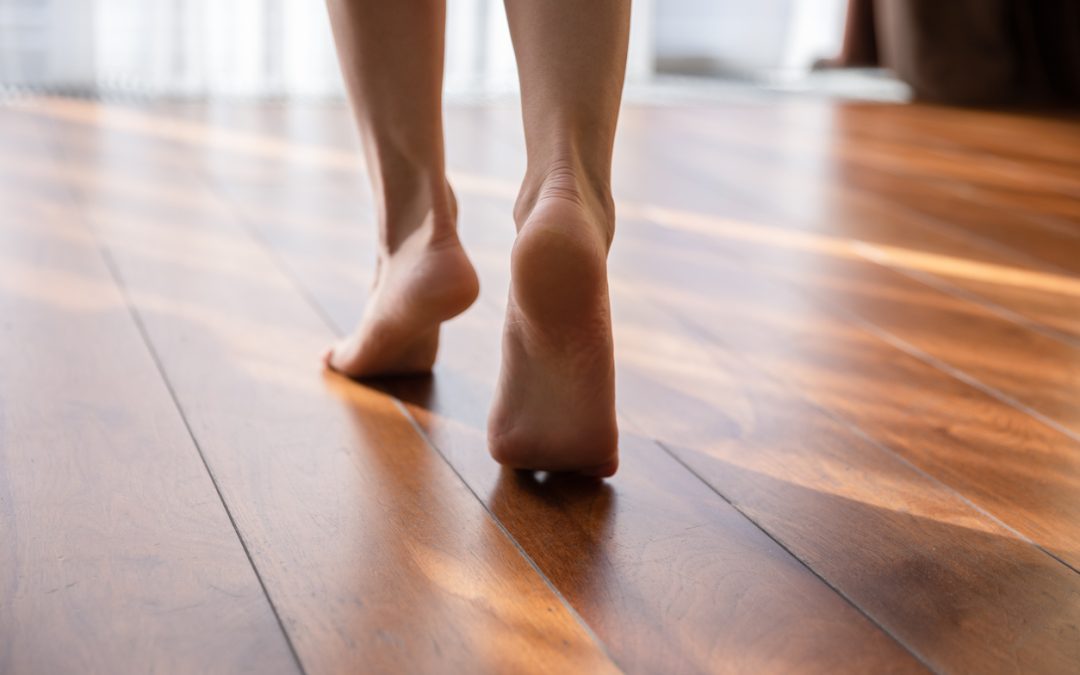Appreciation for your home’s character may have crossed the threshold from endearing to annoying with each squeak of its hardwood floors. Movement through interior temperature changes and years of use causes wooden floorboards to rub against one another, nail heads, or the subfloor. The good news is that you can fix squeaky floor boards yourself with the help of a few simple products available at your local home improvement store.
What Causes Squeaky Wooden Floorboards?
Floor squeaks occur as a result of the home’s movement. Although they’re typically not a cause for alarm, some creaks can indicate a serious foundational issue. The first step in correcting the problem is to locate it and determine the cause.
- Fluctuating interior temperatures and humidity levels: Wood’s porous structure naturally responds to seasonal changes. It expands in warm conditions and contracts when it’s cool. Maintaining a humidity level between 30% and 60% is optimal for wood floors. Lower percentages are too dry, and higher levels increase the likelihood of moisture seeping in and warping the wood.
- Wear and tear: Continual foot traffic and moving furniture eventually causes the boards to move and rub against each other.
- Loose or warped joists: Floor joists are the horizontal support beams on which the subfloor and finished floor sit. If the joist loosens or warps, it creates a space between it and the subfloor, causing floor squeaks.
- Foundational issues: While squeaky floors typically require minor adjustments, in rare instances they could indicate more serious structural concerns. If you notice warped wooden floorboards or uneven or sloped flooring, it may be time to call in a professional to evaluate your home’s foundation.
How Do You Fix Squeaky Floors?
Once you’ve determined the source of the hardwood creaks, the repair process is straightforward.
Below Floor Repairs
Access to the floor joist and subfloor through a basement or crawl space allows you to see what’s happening under the surface and make necessary adjustments. It requires one person to stand on the floor above, pressing on the squeaky area while you repair the area below.
Shim Space Between Joist and Subfloor
If your creaking floor leads to a space between the joist and subfloor, simply slide a small piece of wood, or a shim, with construction adhesive affixed to the end into place. It should easily slide in no more than two inches to secure the gap and eliminate the irritating noise.
Screw the Subfloor to the Wood Floor
Securing the subflooring and the finished floor together requires keeping a few simple fractions straight, but when you’ve finished, you’ll have created a permanent solution to the floor’s noise problem.
- Remove a floor register to measure both the finished floor and subfloor together.
- Subtract 1/2″ from the combined thickness of both floors.
- Mark a 1/8″ drill bit with tape indicating where the ½” stopping point is.
- Purchase #8 wood screws that are ¼” shorter than the combined floor thickness, so you avoid going through the hardwood’s surface.
- Use the 1/8″ taped drill bit to create several pilot holes spaced about six inches apart around the area of the squeak.
- Screw in the wood screws, stopping when the heads are level with the subfloor surface.
Above Floor Repairs
You still have above-floor repair options if you can’t access the subfloor from below.
Powdered Graphite
Powdered graphite lubricates the areas in the floor that are rubbing together. Use your foot to press on the creaky area and then sprinkle the powder between the wooden floorboards. It might take several rounds of pressing and sprinkling to successfully eliminate the noise.
Drill Through the Wood Floor’s Surface
Similar to the below-surface method, drilling through the finished floor’s surface requires a final step of covering the hole with wood filler.
- Remove a floor vent to measure the thickness of the finished floor only.
- Use tape to mark the stopping point on a 1/8″ drill.
- Be careful to stay at least ½” away from the boards’ edges. Drill several pilot holes around the squeaky area.
- Drill trim screws through the finish and subfloor to secure them together. You want the screw’s head below the floor’s surface.
- Choose a wood filler that matches the floor, and fill in the holes
If you drive the screws through the floor’s surface, you may want to use Squeeeeek No More to accurately break off the screw heads just below the surface edge.
Uncertain about how to begin? Contact one of our knowledgeable associates to help get you started.
CLARKS ACE HARDWARE
Ellicott City
10325 Baltimore National Pike
Ellicott City, MD 21042


Recent Comments